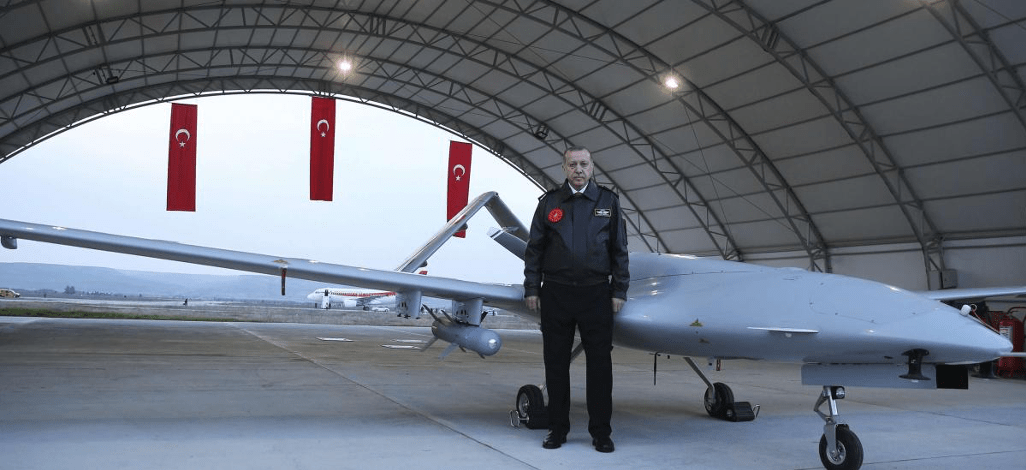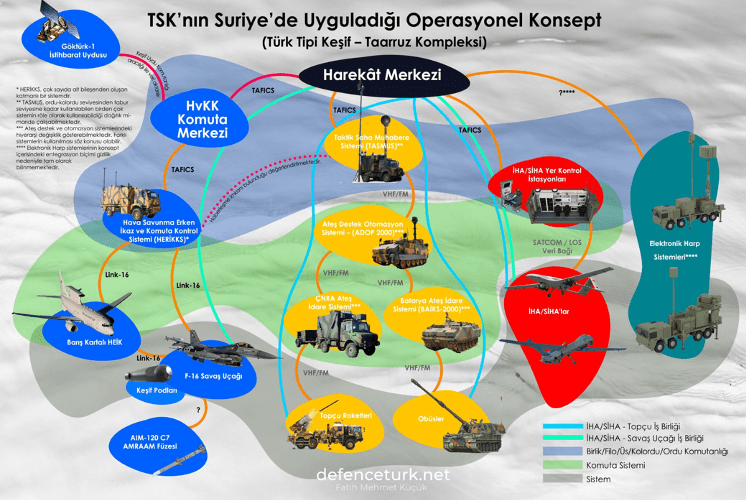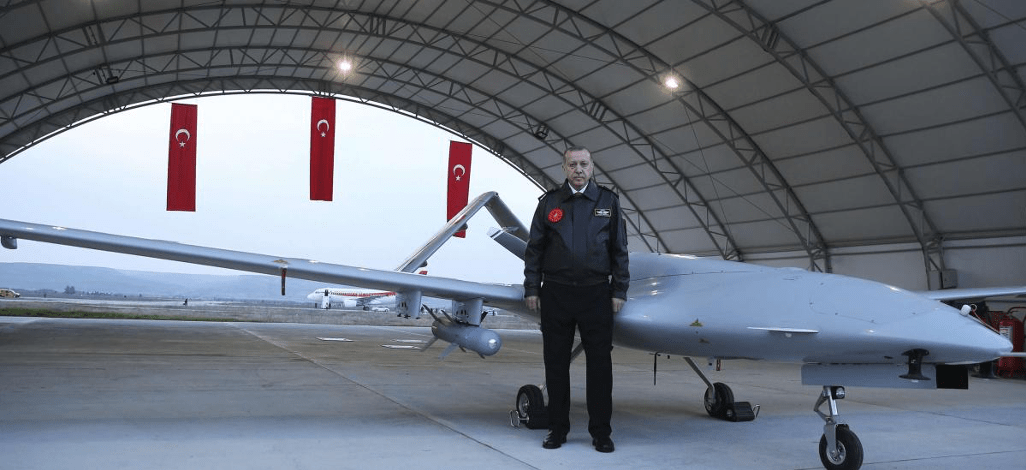Latest Thread
You are using an out of date browser. It may not display this or other websites correctly.
You should upgrade or use an alternative browser.
You should upgrade or use an alternative browser.
I haven't seen this configuration on any other platform, not ideal but probably patentable.
Is that a real image or photoshop? I remember seeing Anka with Cirit pod but never saw flying or performing fire.
Anka was showcased with Cirit at some point. To be honest, it would be efficent, considering you get a quick response capability for such a low price.
It's artwork. Check #1,360 .Is that a real image or photoshop? I remember seeing Anka with Cirit pod but never saw flying or performing fire.
Combat-Master
Baklava Consumer
Combat-Master
Baklava Consumer
Older generation of ANKA-S with a TEI modified (to 170hp) Thielert Centurion 2.0 diesel aviation engine

Combat-Master
Baklava Consumer
ANKA-A packed to transport


ASELSAN CATS sistemi aktif kullanımda | Savunma Sanayi
Teknoloji Bakanı Varank, Kanada'dan alınan CATS sistemine ambargo uğramasından sonra ASELSAN'ın geliştirdiği CATS sisteminin kullanılmaya başlandığını açıkladı.
 www.savunmasanayist.com
www.savunmasanayist.com
With it’s 59kg weight and 30 km operational range this is another step towards fully indigenous subsystems as well for our UAV‘s.
Combat-Master
Baklava Consumer
Turkey’s New Joint Operational Concepts Foreshadow the Future of Armed Conflict
By Noah RinglerPosted onMarch 16, 2021
Turkish President Recep Tayyip Erdogan Stands in Front of a Bayraktar TB-2 Drone. Photo Credit: AA
Following the July 15, 2016 coup attempt and subsequent violent purges, Turkish Armed Forces launched major military operations in Iraq, Iran, Syria, and Libya and continued to expand basing across North Africa.https://georgetownsecuritystudiesre...oreshadow-the-future-of-armed-conflict/#_edn1 These operations exhibited characteristics indicative of the capabilities and constraints of middle powers and hint at the future of warfare. Turkey’s operations appear to be modeled upon the U.S. Special Forces counterterrorism operations. Similarities include Turkey’s use of advisors, close air support, raids, and tactical teams to support local partner forces, often trained and supplied by the supporting power. Turkish special forces units have been involved in NATO operations in Afghanistan and Turkish counterterrorism operations in northern Iraq and southeastern Turkey, preparing them for the expanded operations following the coup attempt. However, Turkey’s air power took a major hit as hundreds of years of flying expertise was purged in 2016, but many pilots have since resumed flying Turkey’s main fighter jet, the F-16, some still on parole.[ii] Lacking the critical ability to deliver air support across multiple theaters, Turkey engaged in technology transfer and development of an expansive domestic drone production program, which now boasts several platforms for reconnaissance, precision strike, and bombing missions.[iii]
Turkey’s rise as a drone power is the subject of significant study and critical to Turkey’s expansion of regional military operations, but lesser known is the network of electronic warfare systems that make the drones effective. The Turkish joint operational concepts exhibit characteristics similar to the new U.S. Department of Defense Joint All-Domain Command & Control (JADC2) initiative, which plans to integrate sensors and weapons systems into a single big data driven network across domains, commands and services.[iv][v] Over the past 25 years, Turkish General Staff planners have put into place a unique “Turkish style reconnaissance and attack complex” which was seen in action in Syria and updated based on the Turkish experience fighting ISIS alongside U.S. Special Forces in late 2016.[vi][vii] The joint operational concept relies on a series of domestically produced electronic warfare and fire support systems integrated by the Turkish Armed Forces Integrated Communications System (TAFICS), which has recently been expanded to include satellites such as the Gokturk and Turksat.[viii] On the ground, forward deployed mobile systems such as the Air Defense Early Warning and Command Control System (HERIKKS), the Tactical Battlefield Signal System (TASMUS), Fire Support Automation System (ADOP), and mobile drone command centers support all branches of the Turkish Armed Forces. Turkish Ground Forces (TKKK) are also interconnected by encrypted VHF and Satellite communications (SATCOM/LOS) with electronic warfare, drone, artillery, and air defense operators at the battalion level, or unit level if special forces or advisors.[ix]

Caption: Analyst Rendering of Selected ‘Turkish Armed Forces Operational Concept’ Systems. Photo Credit: Fatih Mehmet Kucuk
The integration and non-hierarchical networking of the systems has delivered Turkey operational successes in battles against Russia, Syria, and the Syrian Democratic Forces (SDF), a U.S.-backed partner force in northeastern Syria, as well as the Russian and UAE-backed “Libyan National Army (LNA)” commanded by Khalifa Haftar in Libya.[x],[xi] The operational concept has destroyed Russia’s advanced S-300 air defense systems, drones, and electronic warfare systems.[xii] Taken as a whole, Turkey’s success demonstrates a leveling of the playing field provided by relatively low-cost systems like drones and electronic warfare systems, which are easy to proliferate and are increasingly deployed by both nation-states and non-state actors. This leveling effect is compounded by the network effects of longer range precision artillery, rocket systems, and capacity of loitering munitions and drones to conduct both fire support and air defense missions – all increasingly sharing and integrating data into a common digital framework. Most importantly, Turkish personnel and generals are trained to interface with the system from the operations room level down to individual team level. The joint concept also requires that units maintain and utilize interoperability outside the traditional chain of command. Human knowledge and training remain central to the success of the concept – digital, networked technological warfare systems are necessary but not sufficient to achieve operational success. In combination with training and retraining, Turkey’s agile, distributed, and networked joint operations are tuned to conditions in the theater and specific proxy forces and provide a low-cost and resilient approach to modern warfare. Further, Turkey is working to develop and export the operational concept to its allies such as Azerbaijan and Pakistan, as well as produce domestic ballistic missile and autonomous attack helicopters and heavy bombers to integrate with the concept.[xiii]
Interoperability and low-cost “lead from behind” operations using contractors and local forces — a way of war pioneered by the U.S–has proliferated as countries around the world look to replicate what they see as U.S. tactical and operational capability. By aiming to apply it to their own strategic interests, Turkey and its non-NATO allies hope to apply the lower-cost strategy with more strategic success than the U.S. has in 20 years of counterterrorism operations. The U.S. must plan for proliferation of digital, networked joint operational concepts and recognize their powerful consequences for U.S. forces and allied operations in conflicts around the world.

Turkey’s New Joint Operational Concepts Foreshadow the Future of Armed Conflict
Turkish President Recep Tayyip Erdogan Stands in Front of a Bayraktar TB-2 Drone. Photo Credit: AA Following the July 15, 2016 coup attempt and subsequent violent purges, Turkish Armed Forces launc…
 georgetownsecuritystudiesreview.org
georgetownsecuritystudiesreview.org
AKINCI S-1, the first mass production aircraft, completed
Combat-Master
Baklava Consumer
ST-1 Serial Production variant, destined to enter inventory at some point this year

PT-3 Last prototype test Akinci

If you look at some of the details of both UCAVs you can see design changes in some of the sensor and communication payloads.
PT-3 Last prototype test Akinci
If you look at some of the details of both UCAVs you can see design changes in some of the sensor and communication payloads.
Combat-Master
Baklava Consumer
Improved version of Baykar's Mini-Drone which first saw introduction into Turkish Armed Forces in 2007
- High Definition Camera
- 12000 F. Altitude
- 2+ Hours Flight
- Night Flight
- Flight Under Under Heavy Electronic Interference
- 30+ Km Communication
- FHD Digital Data Link
- 10X Optical / 32x Digital Zoom
- Flight between -20 ° C and + 55 ° C
Glad to see developments in their first operational type UAV.Improved version of Baykar's Mini-Drone which first saw introduction into Turkish Armed Forces in 2007
- High Definition Camera
- 12000 F. Altitude
- 2+ Hours Flight
- Night Flight
- Flight Under Under Heavy Electronic Interference
- 30+ Km Communication
- FHD Digital Data Link
- 10X Optical / 32x Digital Zoom
- Flight between -20 ° C and + 55 ° C
Combat-Master
Baklava Consumer
When do I get payed?!







